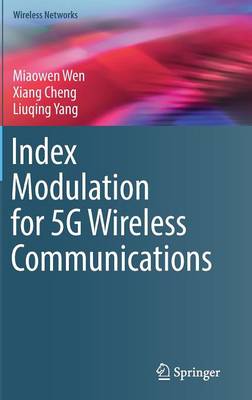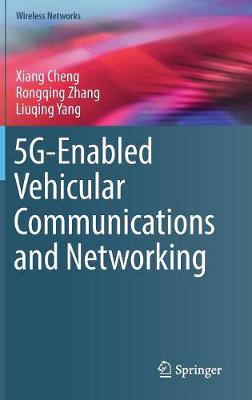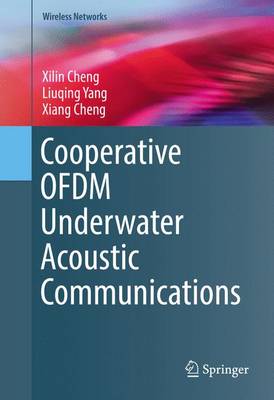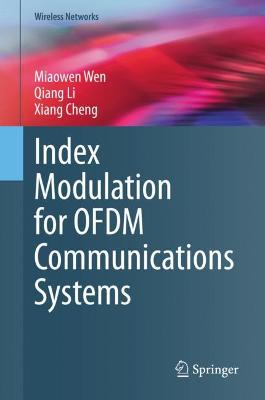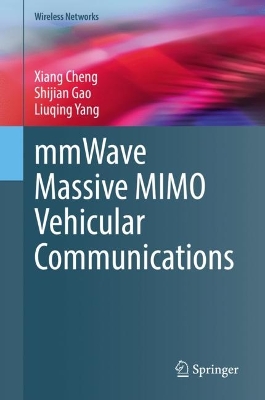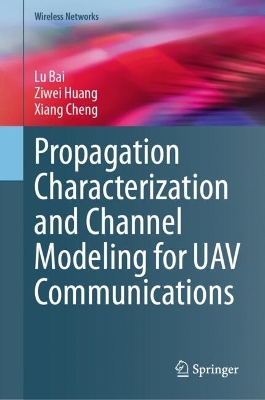Wireless Networks
8 total works
Mobile Big Data
by Xiang Cheng, Luoyang Fang, Liuqing Yang, and Shuguang Cui
This book provides a comprehensive picture of mobile big data starting from data sources to mobile data driven applications. Mobile Big Data comprises two main components: an overview of mobile big data, and the case studies based on real-world data recently collected by one of the largest mobile network carriers in China.
In the first component, four areas of mobile big data life cycle are surveyed: data source and collection, transmission, computing platform and applications. In the second component, two case studies are provided, based on the signaling data collected in the cellular core network in terms of subscriber privacy evaluation and demand forecasting for network management. These cases respectively give a vivid demonstration of what mobile big data looks like, and how it can be analyzed and mined to generate useful and meaningful information and knowledge.
This book targets researchers, practitioners and professors relevant to this field. Advanced-level students studying computer science and electrical engineering will also be interested in this book as supplemental reading.
Index Modulation for 5G Wireless Communications
by Miaowen Wen, Xiang Cheng, and Liuqing Yang
Designed for researchers and professionals, this book is essential for anyone working in communications networking, 5G, and system design. Advanced-level students of engineering and computer science interested in efficiency techniques will also find the content valuable.
5G-Enabled Vehicular Communications and Networking
by Xiang Cheng, Rongqing Zhang, and Liuqing Yang
This book investigates and reviews recent advanced techniques and important applications in vehicular communications and networking (VCN) from a novel perspective of the combination and integration of VCN and connected vehicles, which provides a significant scientific and technical support for future 5G-based VCN.
5G-Enabled Vehicular Communications and Networking introduces vehicular channel characteristics, reviews current channel modeling approaches, and then provides a new generic geometry-based stochastic modeling approach for vehicle-to-everything (V2X) communications. The investigation of vehicular channel measurements and modeling provides fundamental supports for the VCN system design. Then, this book investigates VCN-vehicle combination from PHY and MAC layers, respectively. As for the PHY layer, many advanced techniques that can be effectively applied in VCN to counter the PHY challenges are introduced, including novel ICI cancellation methods, index modulated OFDM, differential spatial modulation, and energy harvesting relaying.
As for the MAC layer, distributed and centralized MAC designs are analyzed and compared in terms of feasibility and availability. Specifically, distributed congestion control, D2D-enabled vehicular communications, and centralized data dissemination scheduling are elaborated, which can significantly improve the network performance in vehicular networks. Finally, considering VCN-vehicle integration, this book introduces several hot-topic applications in vehicular networks, including electric vehicles, distributed data storage, unmanned aerial vehicles, and security and privacy, which indicates the significance and development value of VCN-vehicle integration in future vehicular networks and our daily life.
The primary audience for this book includes professionals and researchers working in the field of vehicular communications, intelligent transportation systems (ITS), and Internet of vehicles (IoV). Advanced level students studying electrical engineering will also find this book useful as a secondary textbook for related courses.
Due to the high mobility and low latency requirements of 5G wireless communications, this book discusses how to deal with the imperfect CSI. It also discusses how to deal with e.g., throughput maximization, outage probabilities maximization and guarantee, energy efficiency, physical-layer security issues with feedback channel capacity constraints, in order to characterize and understand the applications of practical scenes.
This book will target professionals & researchers working in the fields of Wireless Communications and Networking, Resource Allocation and Transmissions. Advanced-level students in electrical engineering and computer science will also find this book useful as a secondary textbook.
Cooperative OFDM Underwater Acoustic Communications
by Xilin Cheng, Liuqing Yang, and Xiang Cheng
Index Modulation for OFDM Communications Systems
by Miaowen Wen, Qiang Li, and Xiang Cheng
Thanks to their considerable advantages, index modulation and orthogonal frequency division multiplexing (OFDM) are considered to be promising candidates for future wireless communications. This book focuses on the index modulation techniques for OFDM communications systems, which allow information to be conveyed not only via constellation symbols, but also by the indices of various transmission entities in OFDM systems, such as signal constellations, spreading codes, and pilots.
The book discusses representative transmitter and receiver designs, optimization and performance analysis of index modulation based on various transmission entities. It first introduces readers to constellation-based index modulation via a combinatorial approach, including the classical index modulation scheme and two embodiments of information-guided precoding for OFDM systems. It further discusses constellation-based index modulation via a permutational approach, including the basic, generalized, and diversity-enhancing forms. It then describes how the spreading code is used to design an index modulated spread spectrum for OFDM systems, and the extensions to multi-code and multi-user scenarios. In addition it explores information guided pilot insertion for OFDM systems, followed by applications to carrier phase tracking and channel estimation. Lastly, the book highlights a number of open problems and discusses future research directions in the general field of index modulation.
Intended for professionals and researchers in the field of wireless communications, this book is also a valuable resource for advanced-level electrical engineering and computer science students.
mmWave Massive MIMO Vehicular Communications
by Xiang Cheng, Shijian Gao, and Liuqing Yang
This book proposes promising mmWave solutions to promoting safe and reliable vehicular communications. The authors include topics such as channel estimation, multi-user transceiver design, and advanced index modulation. For channel estimation, unique channel properties and hybrid structures are first introduced, followed by the development of a doubly-sparse doubly-selective channel estimator. For multi-user transceiver design, the concept of hybrid block diagonalization (HBD) is first introduced, followed by a generic HBD-based transceiver design to maximize the system capacity. For advanced index modulation, the generalized beamspace modulation for uplink multi-user scenarios are first introduced, followed by the precoded beamspace modulation for the downlink. Finally, this book discusses open problems and future research directions to inspire further studies in the field of mmWave vehicular communications.
Propagation Characterization and Channel Modeling for UAV Communications
by Lu Bai, Ziwei Huang, and Xiang Cheng
This book focuses on the propagation characterization and channel modeling of unmanned aerial vehicle (UAV) communications. Currently, there are no books that cover this specific topic, while the author’s book aims to fill this blank in the existing literature by elaborating accurate yet easy-to-use UAV channel models. The studied topics, including propagation characteristics of UAV communications, a time stationary regular-shaped geometry-based stochastic model (RS-GBSM) for UAV narrowband channels, a time non-stationary RS-GBSM for UAV narrowband channels, a time non-stationary RS-GBSM for UAV wideband channels, a time-space non-stationary irregular-shaped geometry-based stochastic model (IS-GBSM) for UAV wideband channels, a time-space-frequency non-stationary IS-GBSM with UAV’s 3D continuously arbitrary trajectory and self-rotation, a mixed-bouncing based IS-GBSM for UAV wideband channels, and a time-space-frequency non-stationary IS-GBSM with time-space consistency for UAV wideband channels, will be elaborated in this book, accompanied by insightful discussions and efficient suggestions. Finally, this book closes up with some promising directions, hoping to promote future research outcomes in the field of UAV channel modeling.
As the UAV technology gets mature rapidly, UAV communications are shifting from military development to civilian and commercial sectors. The UAV communication is widely considered as a significant and indispensable component of wireless communications. It is well known that an accurate yet easy-to-use UAV channel model is the foundation of designing a proper UAV communication system and evaluating its performance. To the authors’ best knowledge, there is no book dedicated to the propagation characterization and channel modeling of UAV communications. This book remedies this situation and provide valuable suggestions for the design of UAV communication systems by adequately presenting the UAV propagation characterization and channel modeling. Though the book is dominantly written for researchers and professionals in wireless communications, advanced-level students majoring in computer science or electrical engineering may also find the content useful.

